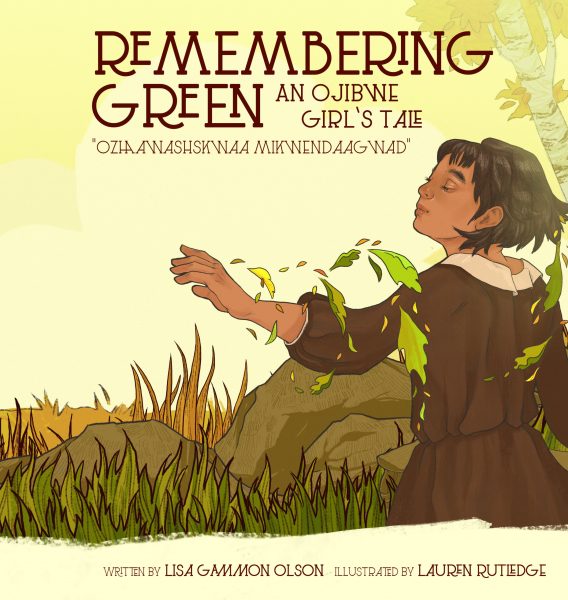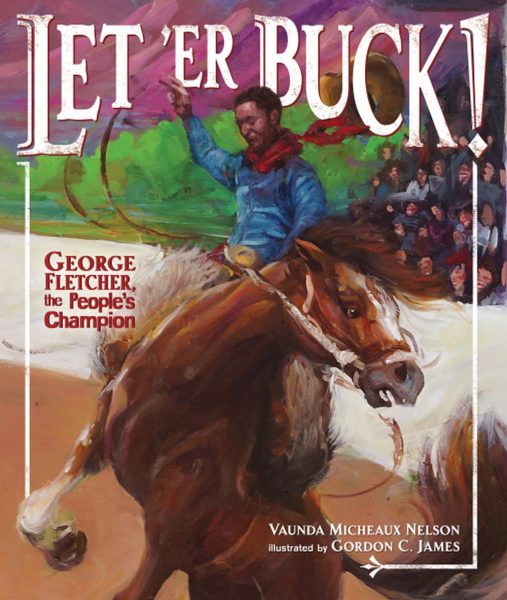
Our collection of picture books featuring Black and Indigenous people and People of Color (BIPOC) is available to the public. *Inclusion of a title in the collection DOES NOT EQUAL a recommendation.* Click here for more on book evaluation.
Find titles using a keyword search below (e.g. adoption, birthday, holidays, etc.), or by selecting one or a combination of filters on the lefthand sidebar below.
First time here? Start here!
89 matching books
Show FiltersFilter Results
-
Biography 38
-
Cross Group 23
-
Folklore 2
-
Fiction 42
-
Non-Fiction 39
-
Boy/Man 89
-
Girl/Woman 59
-
Jewish 2
-
Joint Main 11
-
Secondary 76

Remembering Green
"In the late 19th century, the United States Government began establishing Indian Residential Schools with the intent of forcibly assimilating Native American children into Euro-American culture. Wenonah, a young Ojibwe girl, will need her Great Grandfathers help to find ways she can remember her beautiful culture & indigenous identity in this time of great upheaval for her tribe." -- publisher

Red Bird Sings
"I remember the day I lost my spirit." So begins the story of Gertrude Simmons, also known as Zitkala-Ša, which means Red Bird. Born in 1876 on the Yankton Sioux reservation in South Dakota, Zitkala-Ša left her home at age eight to go to a residential school in Indiana. But she soon found herself caught between two worlds—white and Native American. At school she missed her mother and her traditional life, but Zitkala-Ša found joy in music classes. "My wounded spirit soared like a bird as I practiced the piano and violin," she wrote. Her talent grew, and when she graduated, she became a music teacher, composer, and performer. Zitkala-Ša found she could also "sing" to help her people by writing stories and giving speeches. As an adult, she worked as an activist for Native American rights, seeking to build a bridge between cultures." -- from publisher

A movie in my pillow / Una película en mi almohada
Jorgito lives in San Francisco's Mission District, but has not forgotten his native El Salvador. His memories of the volcanoes, his grandmother's stories, and the cornmeal "pupusas" form a patchwork of dreams that becomes a movie in his pillow.

Follow me down to Nicodemus town
When Dede sees a notice offering land for black people in Kansas, her family decides to quit sharecropping and become homesteading pioneers.

Chester Nez and the unbreakable code: A Navajo Code Talker’s Story
"As a boy, Chester Nez was taught his native language and culture were useless, but he was later called on to use his Navajo language to help create an unbreakable military code during WWII"--|cProvided by publisher

Let ‘er buck!
"African American George Fletcher loved horses from an early age. When he unfairly lost the 1911 Pendleton Round-Up to a white man, the outraged audience declared him "people's champion"--Provided by publisher

The ghost dance
The bountiful world of their ancestors was no more -- the result of white settlers' relentless westward movement in the U.S. A Paiute visionary, Tavibo, and his son each dreamed that if Native peoples danced, the white people would disappear and the ghosts of the wildlife that had been decimated would return. The ghost dance movement began in the U.S. in the 1800s, in hope as native peoples came together to dance for their shared dream. The dream failed and they tried again. Again the dream failed tragically. But the vision and the dream still call out to all people, envisioning a future when all Indian peoples would be united, disease would vanish, and the earth would be regenerated and restored. --publisher's site

Indian boyhood
Imagine a childhood full of adventure. Where riding horses, playing in the woods, and hunting for food was part of everyday life; where a grizzly bear, a raccoon, or a squirrel was your favorite pet. Such was the childhood of American Indian author Charles Eastman, or Ohiyesa (1858- 1939). Michael Oren Fitzgerald adapts Eastman's 1902 memoir of his childhood, Indian Boyhood for a younger audience. Eastman was born in a buffalo hide tipi in western Minnesota and raised until age fifteen in the traditional Dakota Sioux manner. He was then transplanted into the "white man's" world, where he went on to become a medical doctor, field secretary for the YMCA, and co- founder of the Boy Scouts of America.

Unstoppable: How Jim Thorpe and the Carlisle Indian School Defeated Army
In the autumn of 1912, the football team from Carlisle Indian Industrial School took the field at the U.S. Military Academy, home to the bigger, stronger, and better -equipped West Points Cadets. Sportswriters billed the game as a sort of rematch, pitting against each other the descendants of U.S. soldiers and American Indians who fought on the battlefield only 20 years earlier. But for lightning-fast Jim Thorpe and the other Carlisle players, that day's game was about skill, strategy, and determination. Known for unusual formations and innovative plays, the Carlisle squad was out to prove just one thing- -that it was the best football team in all the land.
